When you dive into the professional world of photo editing and photo retouching, you’ll quickly find yourself working against the clock. Although the first thought in your mind would be to do less work to manage your time, you’ll find yourself leaving a lot of opportunities on the table.
A tablet, although not necessary for photo editing, can be a great tool to work faster with no compromise on precision or accuracy. The digital pen with tablet can give you greater control over your edits and make all the difference in helping you work efficiently, accurately, and being productive.
There’s a difference in the tablets you’d find and not everyone will best suit your specific needs. But don’t fret, there’s something for everyone. That’s why in this guide, we’ll be reviewing the best tablets for photo editing in 2023 that you can buy to get started.
Our Top Picks of the Best Tablets for Photo Editing and Retouching
If you’re in a rush, check out our top picks for the best photo editing tablets:
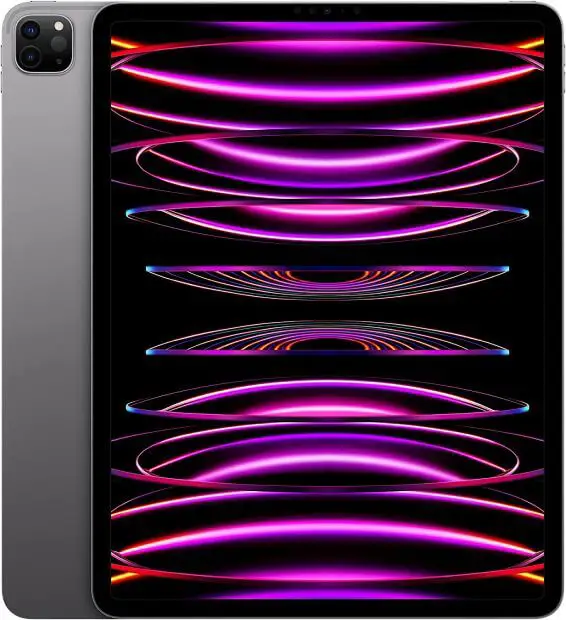
Apple iPad Pro – Overall Best Tablet for Photo Editing
The 12.9-inch iPad Pro excels in photo editing with its stunning Liquid-Retina XDR display, powerful M2 chip, and seamless Adobe Creative Suite integration. However, its premium price of $1099 plus a separate $129 for the Apple Pen may deter some buyers.
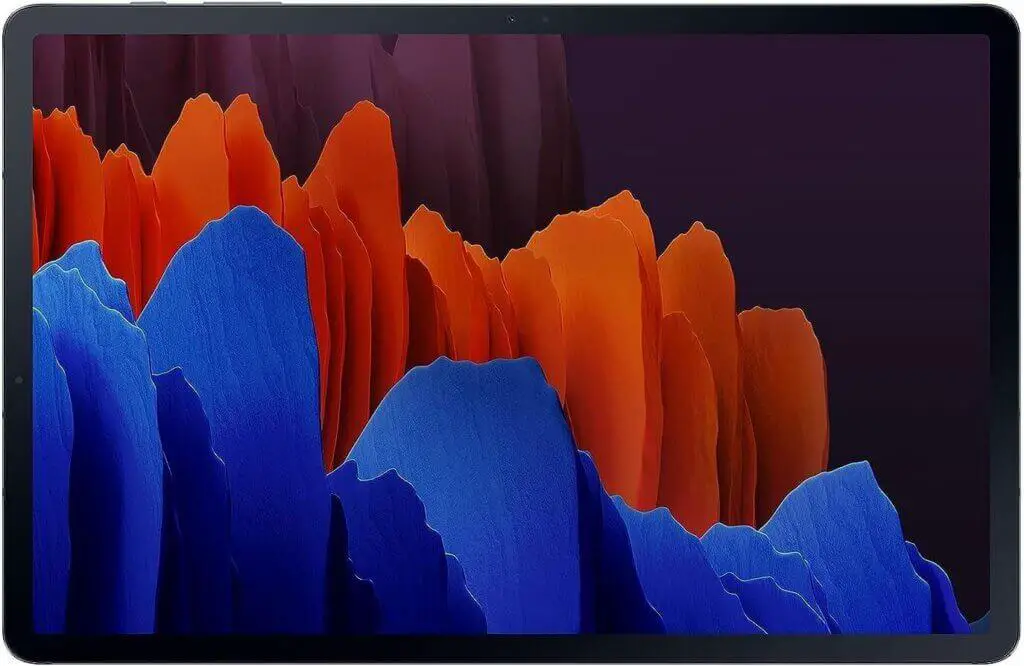
Samsung Galaxy Tab S7+ – Overall Best Android Tablet for Photo Editing
The Samsung Galaxy Tab S7+ stands out as the top Android tablet for photo editing with its vibrant 12.4-inch display, powerful octa-core processor, and responsive 120Hz refresh rate. It offers expandable storage, an exceptional S-Pen with low latency, and versatile capabilities for gaming, streaming, and productivity. Its long-lasting battery and fast charging add to its appeal.
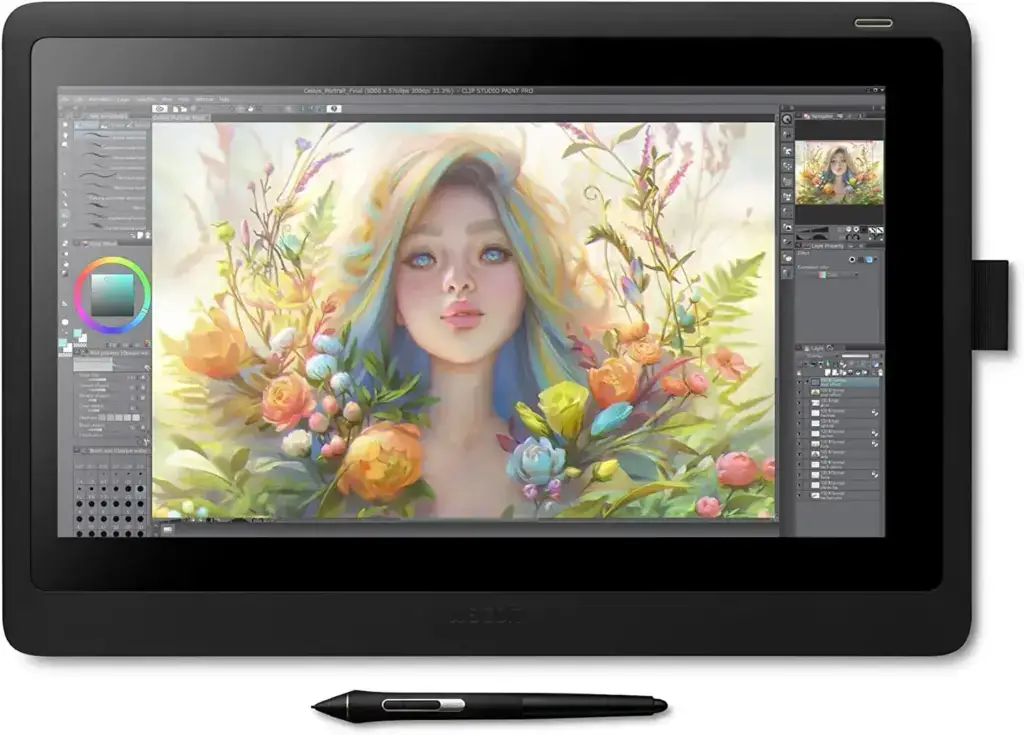
Wacom Cintiq 16 – Best Wacom Display Tablet for Photo Editing and Retouching
The Wacom Cintiq 16 excels as a top choice for photo editing. With its sizable 15.6-inch screen, 1920×1080 resolution, 72% color gamut, and 8,192 levels of pressure sensitivity, it provides industry-standard quality. The Wacom Pro Pen 2 offers precise control, making it an affordable but high-quality upgrade from the Wacom One.
Now, without further ado, let’s get into the detailed reviews of each tablet.
Best Apple Tablets (iPads) for Photo Editing
You can’t get any better than the iPad when it comes to doing creative work. A 12.9-inch iPad Pro is going to be your best friend for all your photo editing and retouching projects. However, Apple offers many other variations of the iPad in their product line.
Check out our reviews on the best iPads for photo editing below to find the one best for your needs.
Apple iPad Pro – Overall Best Tablet for Photo Editing

| Pros | Cons |
|---|---|
| Breathtaking 12.9-inch Liquid Retina XDR display | Expensive |
| Powerful M2 chip processor for ultimate performance | Apple pencil has to be bought separately |
| Great for multitasking | |
| Supports Apple Pencil and Magic Keyboard |
The 12.9-inch iPad Pro is the perfect tablet for photo editing work. Where it starts to shine is its beautiful liquid-retina XDR display that displays bright, crisp colors and an expansive view of your content. It’s important to have a good idea of what the colors are like and to work with highlights and shadows better, and the iPad Pro delivers.
Its M2 chip with octa-core processing and a 10-chip GPU also gives you a massive performance boost, faster rendering, and overall faster speed to move around tasks.
The Adobe Creative Suite is also available and runs smoothly on the iPad. If you’ve worked with photo editing software like Lightroom or Photoshop, you’re well aware of how resource-heavy they are. But given the iPad Pro’s processing power, it can run these apps quickly and efficiently, without you fearing any crashes or lagging.
Finally, if you use other Apple products like Dropbox, iPhone, or a Mac, you can integrate the iPad within your current workflow, making things more efficient.
Not everything with the iPad Pro is rainbows and sunshine though. Such a high-quality tablet does leave a bit of damage to your wallet. The iPad itself comes at a price of $1099 and the Apple Pen has to be bought separately, which is an extra $129.
Apple iPad Air – Best Portable iPad for Photo Editing
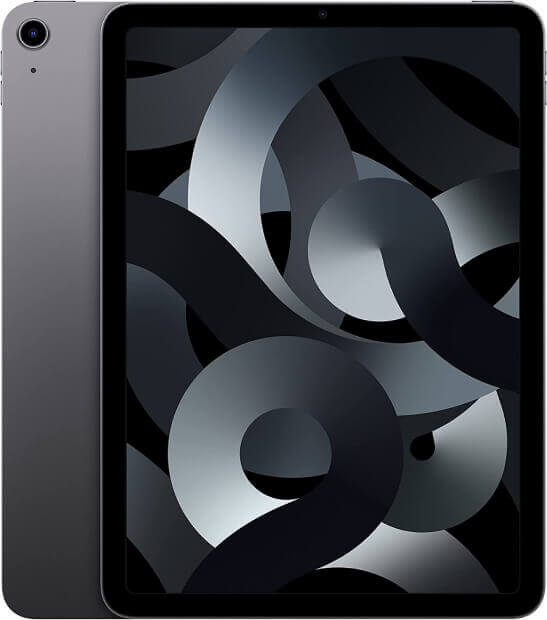
| Pros | Cons |
|---|---|
| Fast performance | No HDR |
| Portable and lightweight | No 3.5mm jack |
| Compatible with 2nd Gen Apple pencil | Awkwardly placed front camera, not suitable for video calls, etc. |
| Image accurate display |
Apple iPad Air is a much lighter version of the iPad Pro. It offers almost the same functionality as the iPad Pro, it has a high color contrast, a nice bright screen, and the fast-processing M1 chip.
If you’re not too hung up about having the fastest processor, nor plan on gaming on graphic-intensive apps, the difference between the M1 and M2 chips may not feel like a lot. In a professional setup where you’re juggling a dozen photo editing tasks all at once? The iPad Pro may just take the crown.
Why? As compared to the iPad Pro, the iPad Air isn’t as bright, has less storage space (the base version is 64GB compared to 128GB), and is smaller with its 10.9-inch screen. Despite that, the iPad Air offers a good balance between performance, quality, and price for professional photography work.
It has fantastic stereo speakers, for those long editing sessions, all-day battery life, and blazing fast 5G connectivity. Get this if you want to enjoy the same functionality as iPad Pro but at a much cheaper price!
Apple iPad Mini – Compact Size iPad for Photo Editing and Retouching
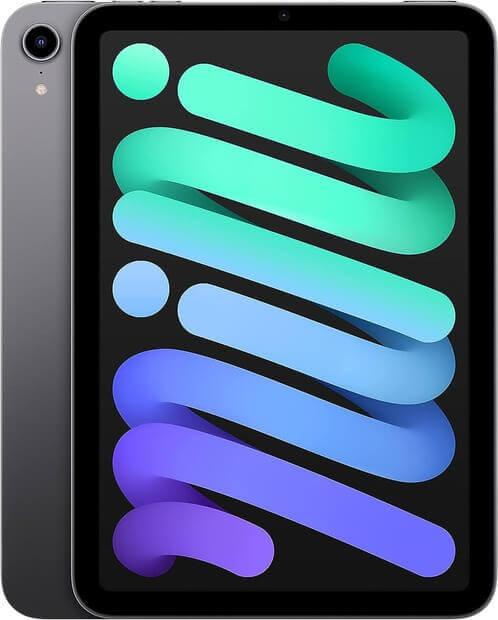
| Pros | Cons |
|---|---|
| Fast A15 bionic processor | No microSD card support |
| Magnetic snap-on for Apple Pencil 2nd gen | Limited to 128GB max storage |
| USB-C for fast charging | No keyboard support |
| Improved camera quality |
If a Samsung tablet is too small for you and the iPad Pro and Air are too heavy and bulky for you to carry around, behold the iPad Mini. This compact iPad comes with an 8.3-inch screen but packs a punch. Its screen features a liquid retina display with True Tone and P3 wide color gamut making your colors vibrant and your text sharp.
It’s also optimized for the Apple Pen, which attaches through a magnet on the side and gives you crisp, clear, and consistent strokes in your edits. Another thing to focus on is its A15 bionic processor, which makes the iPad Mini blazing fast and beats most Android tablets in terms of performance and reliability despite its smaller size.
The main downside may be its storage. The base version comes at 64GB and can be at max. Upgraded to 256GB. This however may only be an issue if you’re working with larger files with resolutions of up to 4K or 8K. Other than that, this iPad can be great for most photo editors.
Best Android Tablets for Photo Editing
Apple’s IOS may not be everyone’s cup of tea. For us Android lovers, there’s a wide range of pen display tablets available that can make your inner photo editor shine.
Samsung Galaxy Tab S7+ – Overall Best Android Tablet for Photo Editing

Samsung Galaxy Tab S7+ is the best Android tablet for photo editing you can get. Upon opening, you’ll be greeted with a 12.4-inch screen and 2800 x 1752 WQXGA+ resolution. Its display is also bright and crisp, making all those colors pop.
The octa-core processor combined with its 6GB RAM makes it FAST and with the 120Hz refresh rate it’s also ultra-responsive. Its base version comes with 6GB RAM and 128GB of storage, and you can upgrade this to 8GB RAM and 512GB of storage as well. However, the Samsung S7+ also has microSD support so you can add up to 1TB of extra storage for storing those ultra-high resolution photographs.
Perhaps the tablet’s shining star is its inclusion of the redesigned S-pen. If you’ve used Samsung tabs before, you’d know how smooth, slick, and consistent these bad boys are. The updated S-pen features 9ms latency which gives you quick response times, almost as writing with pen on paper. This makes it great for note-taking and retouching work, where you need full control over the pressure of your pen.
Finally, this tablet is an all-in-one portable machine. Yeah, that’s right. You can use the Samsung S7+ for gaming, streaming, note-taking, writing, and photo editing – without compromising on speed and performance. To keep up with the performance, it also has an impressive battery life, lasting an average of 14 hours on video playback. Even if the battery does die on you, its fast-charging USB-C support will get it up and running again in no time.
Samsung Galaxy Tab S6 Lite – Best Value for Money Android Tablet for Photo Editing
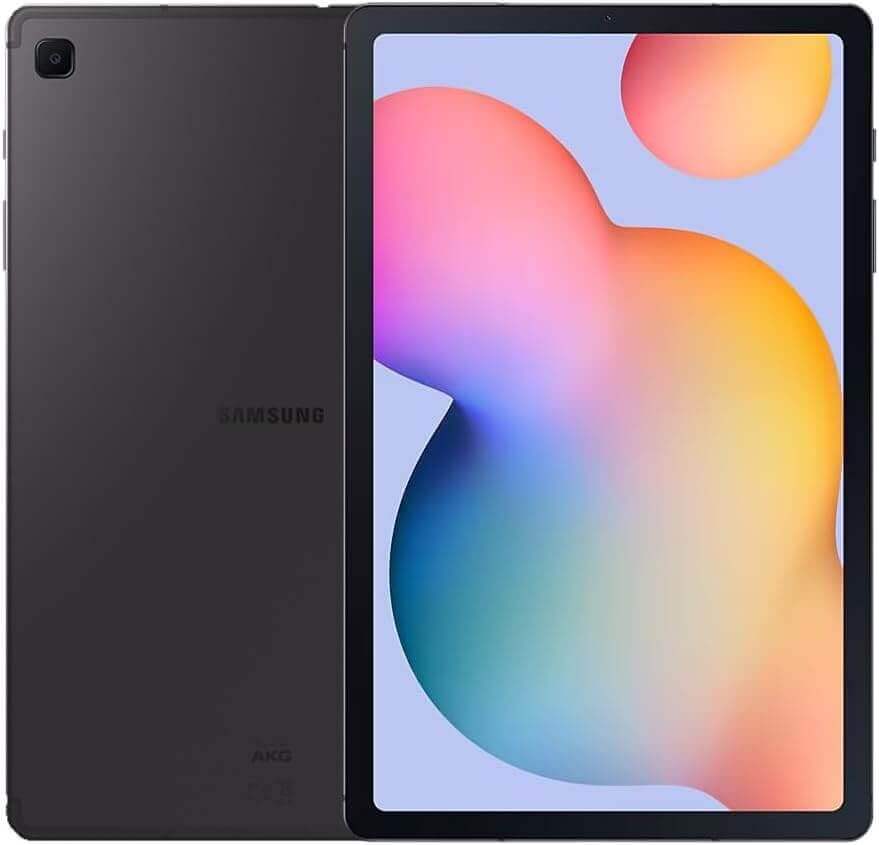
| Pros | Cons |
|---|---|
| Thin, lightweight and slim bezels | Screen brightness and colors could be improved |
| Responsive touch screen | No AMOLED display |
| Battery-less, pressure-sensitive S-Pen | Occasional lagging |
| Excellent battery life |
The Samsung Galaxy Tab S6 Lite is another fantastic photo editing tablet from Samsung. It has a lower screen resolution than its big brother, the Samsung Galaxy Tab S7+, and is smaller as well, featuring a 10.4-inch screen.
With the base version, you get 4GB RAM and 64GB of storage for your photos and apps. However, you can increase the storage with a microSD card supporting up to 1TB.
Surprisingly, this tab runs a later version of Android 12, whereas the S7+ runs Android 10. This may be crucial depending on whether the apps you need are optimized for the latest version.
It weighs only 1 pound, has a 13-hour long-lasting battery, and a pair of awesome stereo speakers. With the vibrant TFT LCD, you also get bright colors and stunning visuals. Whether you’re using it for photo editing or watching your favorite movies, you’ll have joy experiencing it with its color-rich display.
Here’s the main part: It comes with the S-pen. The pen has 4096 levels of pressure, giving you smooth, consistent, and natural-looking strokes. It also attaches magnetically to the tablet, so there’s no risk of you losing the pen and finding a replacement.
Lenovo Tab P11 – Budget Android Tablet for Photo Editing

| Pros | Cons |
|---|---|
| Good quality display with high resolution | Stylus is not included |
| High-performance processor | No headphone jack |
| Great palm rejection and pressure control | |
| Quad speakers for exceptional sound quality |
The Lenovo Tab P11 echoes the same reliability and durability Lenovo has been promising its users for years. It comes with an 11-inch display with great viewing angles and a 2K (2000 x 1200) resolution. You can use it with a stylus or your fingers as the screen prevents smudging and fingerprints and has a bright display for epic color contrast and sharpness.
The tab boasts a robust build, combining metal and plastic, ensuring it’s built to last. It runs on a zippy Qualcomm Snapdragon 662 processor, paired with 4GB of RAM and 128GB of storage, resulting in smooth performance.
Now, here’s the thing about Lenovo tablets – they often require a specific pen for each model. The P11 tab is no exception, as it requires the Lenovo Precision Pen 2, which you’ll need to purchase separately. Fortunately, you can still get both the tablet and pen without breaking the bank.
Once you’ve got that pen in hand, the Lenovo P11 truly shines as a standalone tablet. It offers 4096 pressure levels and tilt detection, delivering an exceptional pen-on-tablet experience for photo editing.
Your strokes will be precise, pressure sensitivity spot on, and tilt support surprisingly excellent, especially considering many budget tablets struggle with this feature. Additionally, it runs on Android 10, granting you access to the latest and greatest photo editing and photo retouching apps available in the Android ecosystem.
Best Wacom Tablets for Photo Editing
Wacom is known as the best drawing tablet brand, but is it good for photo editing? If you’re planning on buying a tablet to improve your workflow, the Wacom tablet series will grant you more precision over your clicks.
For some of these tablets, you may need an external monitor though. So, if you already have a device to store and edit your files, you can get yourself a Wacom tablet to upgrade your photo editing skills.
Wacom Cintiq 16 – Best Wacom Display Tablet for Photo Editing and Retouching

| Pros | Cons |
|---|---|
| Bright display with clear picture quality | Low resolution and color gamut compared to other tablets in this range |
| Comfortable 15.6-inch screen | No multi-touch support |
| Ergonomic pen that doesn’t require charging | No programmable express keys |
| Supports most photo editing programs |
Wacom has remained the gold standard for creatives looking for a high-quality, reliable drawing tablet. The Wacom Cintiq 16 is one of the best Wacom tablets for photo editing due to its big 15.6-inch screen with 1920×1080 display resolution. Not only is it a great size for viewing projects, but it also gives you a 72% color gamut, clear image quality, and 8,192 levels of pressure sensitivity making your strokes much more consistent and in line with the industry standard.
Its size is also ideal for most photo editing projects and comes with the Wacom Pro Pen 2 which gives you ultra-responsive strokes and full control over your lines, pressure, and spread.
Think of the Wacom Cintiq as an upgrade to the Wacom One (reviewed below) but even despite the upgrade in features, it’s an affordable tablet.
Wacom One – Best Value for Money Tablet for Photoshop
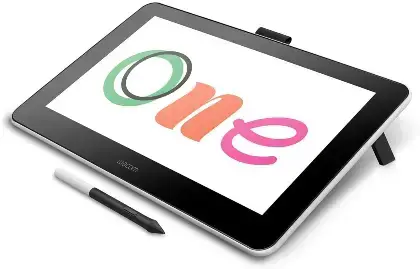
| Pros | Cons |
|---|---|
| Value for money | Pen doesn’t support tilt sensitivity |
| Strong build quality | No programmable express keys or buttons |
| FHD display with 13.3-inch screen | |
| Supports most photo editing programs |
For beginners, Wacom One is the best tablet for Photoshop that enables you to take your photo editing skills to the next level. This pen tablet connects with your monitor and maps your screen so that you can use a pen to easily click, drag, and apply effects to images.
If you’ve used a screenless graphics tablet, then the Wacom One would offer you a nice shift to using a tablet with a screen due to its affordable price tag and versatility.
In terms of color accuracy, It offers a 72% color gamut, similar to the Wacom Cintiq 16, but its screen is not the brightest. If you work in darker settings, this tablet may be more suitable for you. Since its screen isn’t very bright and the tablet has a reflective matte surface, it might be best not to place it too close to a bright light or close to a window in the morning as it’d disturb your visibility a bit.
Wacom Intuos – Best Screenless Graphics Tablet for Photo Retouching Work
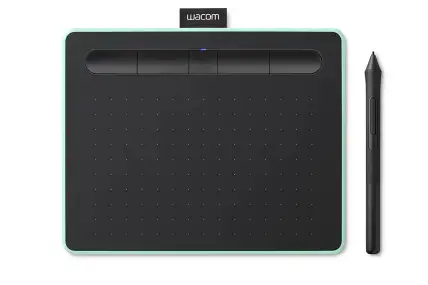
| Affordable | Awkawdly placed express keys |
| Slim minimal design | Pen doesn’t include built-in eraser |
| Comfortable working space | 4 express keys might restrict seasoned photo editors |
| Pressure-sensitive pen | Requires external display |
| Bluetooth, wireless connection; portable |
The Wacom Intuos tablet is a top pick for budget-conscious photo editors. This screenless tablet features four customizable buttons, a 4096-level pressure-sensitive pen, and easy Bluetooth connectivity.
Among Wacom’s Intuos series, the medium-sized option is ideal for photo editing. It offers ample space for natural and responsive drawing. Thanks to the handy customizable buttons and seamless Bluetooth connection, the Wacom Intuos medium tablet streamlines your photo editing process, making it a perfect choice for creatives on a budget.
If you’re interested to know more about Wacom tablets for your photo editing needs, check out our article on the best Wacom tablets for photo editing.
Best Budget Tablets for Photo Editing
If you’re on a tight budget, you may be looking for a cheaper option than the ones we’ve highlighted above. Cheaper tablets often come with a lack of features and lower-quality displays but if all you need to do is basic photo editing work, then these tablets will get the job done.
Simbans Picassotab – Best Budget Tablet For Photo Editing
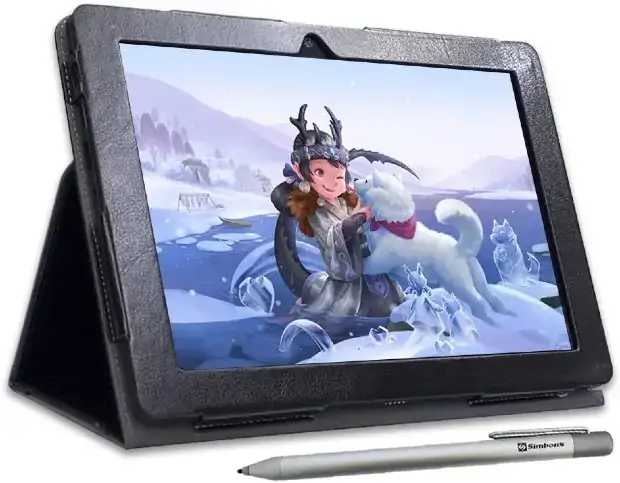
| Pros | Cons |
|---|---|
| Cheap and portable | Light drawing lag |
| Pressure-sensitive pen with palm rejection | Occasional stylus issues |
| Easy to use | Processor could be improved |
| Lightweight |
If you’re a beginner photo editor, the best standalone tablet you can find under $300 is the Simbans Picassotab. Despite its cheap price, it’s made with durable plastic and comes with a free leather case.
For the display, it features a 10.5-inch HD IPS display giving you clear image quality and an ideal size for editing your photos and doing other tasks such as streaming or browsing. On top of that, it’s lightweight making it portable for when you’re traveling.
Given its affordable price tag, it becomes a great value for money once you know it comes with 4GB RAM and 64GB storage. It also comes with a pressure-sensitive pen with 1024 pressure levels, It’s not the best compared to other styluses we’ve discussed here, but for casual photo editors and hobbyists, it gets the job done. There are some issues with the pen lagging and delayed input but this isn’t very noticeable if you’re just starting out.
All in all, The Simbans Picassotab is a decent tablet offering a pleasant “pen-on-paper” experience and smooth precise strokes and clicks.
Amazon Fire HD 10 – Best Amazon Tablet for Photo Editing
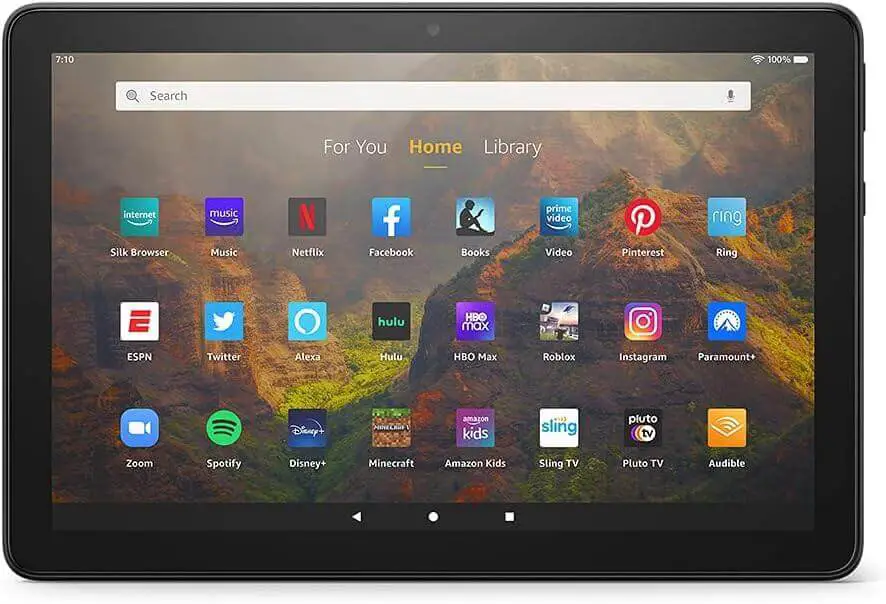
| Pros | Cons |
|---|---|
| Fast processor | Average display quality |
| High amounts of RAM | Only runs Amazon apps |
| Value for money |
The Amazon Fire HD 10 is a cheap tablet that can take care of some of your basic photo editing needs. There are some obvious limitations to the tablet, such as not being able to run professional-grade photo editing software, but it still manages to be a great value for money.
This tablet from Amazon features a 10.1-inch screen and 32GB of storage, upgradeable to 64GB. You can also add a microSD card to increase the storage capacity by 256GB. Due to its lightweight, it’s also a good portable option, if others seem to be out of your range at the moment.
However, as is the case with all budget options, you get what you pay for.
Firstly, since this product is manufactured by Amazon, you can surely guarantee that it wouldn’t work with anything other than what’s included in the Amazon ecosystem. So, you can say goodbye to professional photo editing apps like Photoshop or Lightroom, and would rather be forced to use the apps available on the store.
This really limits the potential of the tablet, as it restricts the software options you have, but still, there are some decent apps in there for doing basic photo editing work.
How to Choose the Best Tablet for Photo Editing
Just because a tablet has a nice sleek design and praiseworthy features, doesn’t mean it’ll be the right fit for you. There are some factors you need to consider when planning on buying a tablet for photo editing.
Below, we’ve listed things to look for when searching for the right tablet for your photo editing needs.
Screen Size and Resolution
First things first, you need a tablet with the right size and resolution to suit your workflow. The “right” size depends on your personal preference. A 16 to 18-inch tablet may give you more space to edit your photos and a clearer view of your edits, but at the same time, it sacrifices portability and may also take up a lot of space on your desk.
In contrast, something like the iPad Mini, which has an 8-inch screen, may be too small for you to work efficiently.
The resolution also matters. You would want to go for the highest resolution with a nice bright display so you can see all your details, colors, and effects clearly. However, you’d need to consider your budget, as typically higher resolution tablets leave a dent in your wallet. So, try to get a nice balance between resolution, screen size, and value for money.
Performance
The tablet you end up buying should be able to run your desired photo editing apps with ease while not compromising on speed. This means finding a tablet that has good amounts of RAM and a fast processor. Almost every tab we listed above falls within the recommended specs, however, this mostly depends on the types of apps you plan on running.
If you’re going to be using Photoshop, then know that that would take a huge toll on your overall performance if you don’t have the processor and RAM to live up to it. For lighter apps, like Snapseed, you can expect even the budget options to breeze through them.
Battery Life
There’s nothing more frustrating than having the battery die during one of your photo editing sessions. If you’re tired of seeing the low battery warning flashing on your screen every time you get in the zone, a tablet with a longer battery life is a must-have.
Many tablet brands nowadays boast an all-day battery life. Look for a tab that offers long battery times and a USB-C port for fast charging.
Operating System
The two main types of tablets you’ll find for photo editing are Apple and Android. Other than the OS, you also have to consider the version of the OS. Older versions may not be able to download your preferred photo editing apps, and even if they can they may not be optimized with the latest features.
For example, if you use Photoshop for editing, then the iPad would give you most of the features you’re used to on your computer. But, for Android users, you’re limited to the basic, stripped-down version of Photoshop, Photoshop Express. Other apps such as Affinity Photo are available only on IOS, so you may even have to consider the apps and their availability on your tablet’s OS.
Other Features
There’s a high chance that you won’t be using your newfound tablet just for photo editing. To get the most bang for your buck, you should go for a tablet that can do it all – streaming, gaming, accounting, drawing, etc.
This would give you the most value for money and even save you money on keeping a separate laptop and tablet.
Frequently Asked Questions
Are Tablets Good for Photo Editing?
Tablets can be great for editing photos as they give you more control over your work and are portable. When compared to laptops, they may not give you the same performance and might have limited features compared to their laptop counterparts, but in general tablets are good for photo editing.
Do Photographers Need a Tablet?
Photographers may not need a tablet, but most professional photographers use a tablet as it gives them more precision in their work. Since with a tablet, you’ll be making edits using a digital pen, it’s easier to visualize and control your pen strokes and clicks.
Do I Need a Graphics Tablet for Photo Editing?
A graphics tablet isn’t necessary for photo editing but having one can give you more control over your edits. Most photo editors and photo retouchers prefer using a graphics tablet as it allows them to create more precise and accurate edits on their photos.
Conclusion
A tablet may not be the most crucial piece of equipment to have as a photographer, but as you break into professional photo editing, it can make all the difference in your workflow. Having a tablet enables you to have more precision, speed, and control over your strokes and effects. Since you’ll be able to see the pen working on the tab in real time, it could help you with editing more detailed pieces.
Tablets come in all shapes and sizes, and there’s no one-size-fits-all. In this article, we explored your options for finding the best tablets for photo editing in 2023 and reviewed the ones we found to be best in terms of performance, reliability, and quality.
There is noticeably a bundle to know about this. I assume you made certain nice points in features also.